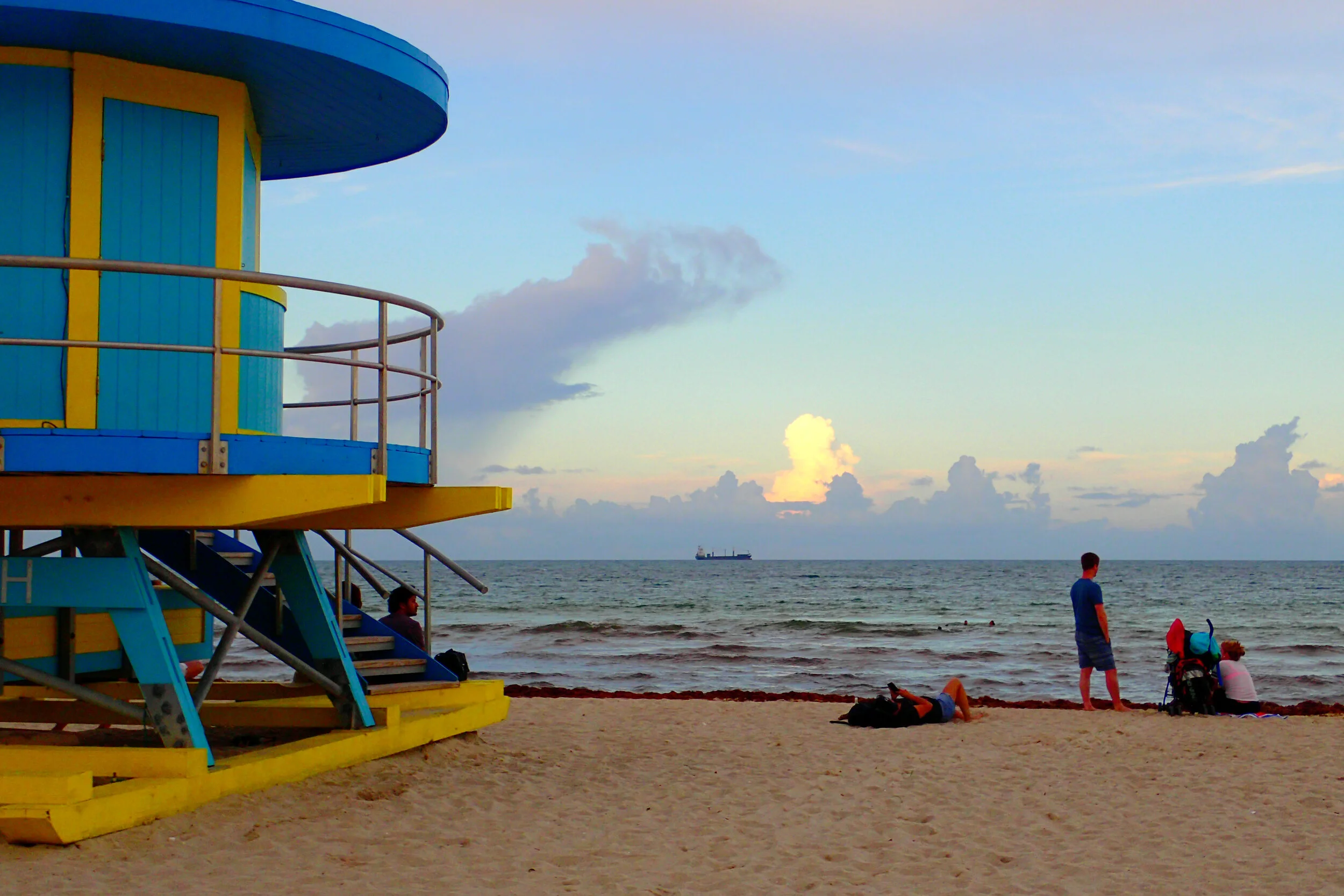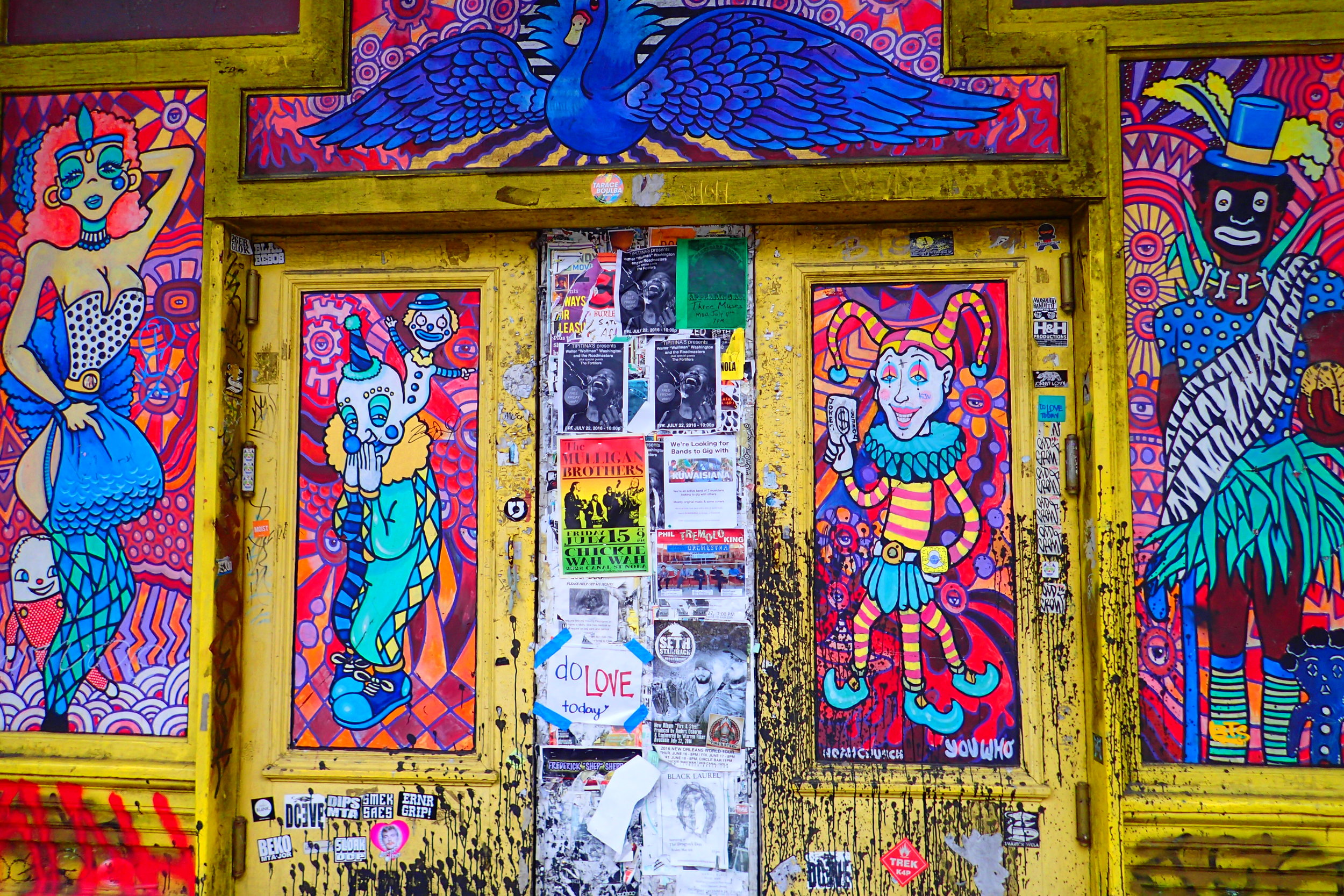While up north in Seyville, I could not pass up the opportunity to visit St. Augustine. St. Augustine is the oldest city in America founded in 1565 by Spanish explorers.
One of the most famous tourist attractions in St. Augustine is Castillo de San Marcos. I decided to do this very typical tour because castles are just cool!
Along the way, I discovered that accessing one of the coolest parts of the castle is only an option when the skies are clear of lightning! This meant that I went back to visit twice in 24 hours—worth it!
Why Is Castillo de San Marcos Special?
To be completely honest, old, historical stuff is often really boring to me. Especially when it has to do with a man-made structure (like a fort) and wars and death—I’m already asleep or attempting to avoid it.
But Castillo de San Marcos national monument is a little different for me. The fort is special because it never fell in battle and it’s the oldest, masonry fort in the continental states. The oldest! That’s pretty dope.
Castillo de San Marcos was built between 1672 and 1695 by the Spanish settlers of St. Augustine. They built it to protect their Gulf Stream shipping route and their claim to the area against France and Great Britain.
In fact, the entire town of St. Augustine took refuge in the fort in 1702 during a 51-day siege. English forces burned the city of St. Augustine to the ground as they left the town. All the while the fort protected everyone inside. They watched as their homes and businesses burned from the walls of the fort.
How To Access Castillo de San Marcos?
For those of you who may never get a chance to visit Castillo de San Marcos in person, there is a virtual tour here that I encourage you to check out!
For those visiting St. Augustine, Castillo de San Marcos is to the East of St. Augustine’s historic district, overlooking the Matanzas River. There is a small, metered ($2.50 per hour) parking lot right next to the castle. People wait in line for parking spaces here or parking can be found in parts of the historic district which will require a bit of walking to get to the castle.
The fees to enter Castillo de San Marco are $15 for anyone over 16 otherwise kids get in free. The receipt can be used for 7 consecutive days to enter the fort, similar to other national parks.
This multi-day access was very helpful for my visit because there was a thunderstorm my first day there. I learned that they close the terreplein, or the walkway along the walls of the fort. Even a small elevated spot before crossing the bridge over the moat was blocked off! My friend Kim and I did our best to enjoy our first visit there, regardless.
To me, the opportunity to see the views from the top of the walls and to imagine being up there back in the 1600s is one of the coolest parts of the fort. So I had to return the next day when the storms were gone just so I could access this part. It was so worth it!
You’ll see that my photos reflect both days I went—some with a very dark and stormy sky and others with brighter skies.
What Is There To See At Castillo De San Marco?
On the way into the castle, there is a drawbridge over a moat that you walk over and through the front gate. I absolutely love that this fort had a real moat!
It didn’t get filled with alligators and sharks, however. It could be flooded with about 1-foot of water in case of a land attack.
Inside of the castle, there are some people there wearing period clothing who provide tours and other information throughout.
I did not join up with any of these tours or seek out their information. But I imagine this would be really great for children. School tours are also common here.
There’s a bunch of rooms throughout the fort with lots of informational placards explaining different aspects of history or how a certain area was used. With these all over the place, the fort feels a bit like a museum walk-through.
Some of the rooms are set up to look as they might have been set up back when the Spanish were using it. Guards beds, tables with fake food displayed, and storage rooms filled with barrels and stockpiled items—all were on display to immerse yourself in what it would have been like.
One part I really enjoyed was a section where you could see the Spanish’s drawings of their ships on the walls. Apparently these were very accurate drawings of the ships since they were so knowledgeable about them at that time.
There also was writing on the wall that is now difficult to decipher. One of the placards showed as much as what is printed on one part of the wall, even though researchers have failed to identify what it actually says.
There is also one prison cell in the fort that actually just looked like every other part of the fort to me (very gritty and unfinished) except that it had a locked door on it!
Another room of the fort was a storage room called the Powder Room—but not that kind of powder room. This was originally built as a gunpowder room! It included a small crawlspace to another section. This is the oldest room in the fort, built in 1675.
Soon, the Spanish realized it was too damp for gunpowder.
During the 1702 siege, the room was used to dump trash since people were stuck in the fort for so long. It was sealed off and didn’t reopen for another 100 years. Animal bones were found inside and local myths spread that the bones belonged to lovers buried alive inside the fort.
My friend Kim and I stood in the trash room, considering this myth for a minute…
Another part of the fort that we found amusing was the toilet…
An ingenius system allowed people to do their business in these little rooms under the stairs and then the tide would surge in and wash it away each day!
What’s On Top Of The Castillo De San Marco?
Finally on day 2, I was able to visit the top of the walls. Kim and I brought our receipt from the day before and that granted us free access.
We headed straight for the stairs once inside the castle. The coolest part of the top, to me, was the bell towers at each corner of the fort walls. These rounded lookout towers reminded me a lot of different areas in the video game Assassin’s Creed IV: Black Flag. That game takes place in the 1700s West Indies and includes lots of Spanish architecture, so it makes sense that my brain immediately went there!
Canons were also placed all around the top of the fort. They were there showing the different varieties of canons set for different purposes during an attack. Some of them were decorated with beautiful engravings.
Mostly, I just enjoyed the views of the River from on top of the fort walls. This was a really nice place to just chill and take in the surroundings of St. Augustine while appreciating all the history.
In Conclusion
I really enjoyed my double visit to Castillo de San Marcos! The rich history there, the architecture, and the beautiful views were all worth a visit. And I am glad that the fee covered 7 days so when the weather prevented access to the top of the walls, I was able to return the next day.
I have so much more to share about my experience in St. Augustine. It was a 24 hour whirlwind but I managed to see a lot with my friend Kim in that short period. Stay tuned for more on St. Augustine next time!






